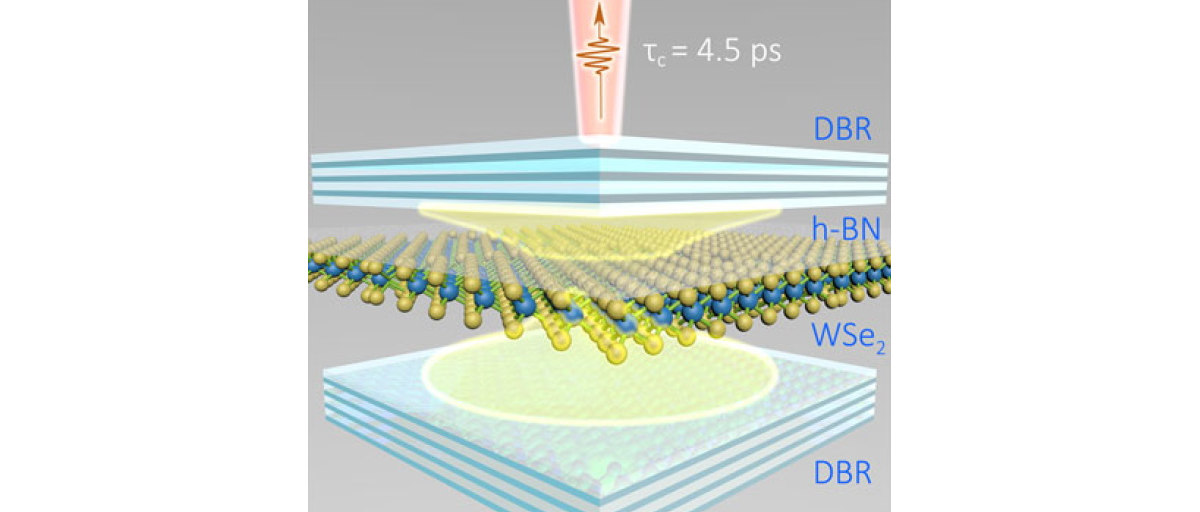Researchers from the University of Oldenburg, managed to create a three-atoms-thick structure that emits laser-like light, at room temperature, for the first time. The researchers believe that coherent light emission from ultathin crystals could enable valleytronics devices in the future.

To create the light, the researchers used exciton-polaritons particles, formed from the strong interaction between confined photons and electrons. The structure itself is made from a single-layer of a WSe2 crystal, that sits on top of a hBN 2D layer. The idea is that the exciton-polaritons are created in a trap in the WSe2 and then captured and reflected by two distributed Bragg reflectors (DBRs) that act as mirrors.
When placing the sample inside a magnetic field, the researchers observed a spectral Zeeman splitting: a phenomenon that occurs due to the electrons slightly changing orbits. The applied magnetic field induced the energy splitting of the polariton emission into two circularly polarized light components, which are linked to the local extrema in the electronic band structure in the semiconductor material, called valleys, in which the two-dimensional excitons are formed. Since photons do not respond to a magnetic field, this magnetic Zeeman splitting was another tell-tale sign of exciton–polariton emission.